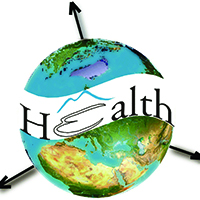COVID-19: End of the beginning?

Published: 29 May 2020
Abstract Views: 28023
PDF: 874
HTML: 12
HTML: 12
Publisher's note
All claims expressed in this article are solely those of the authors and do not necessarily represent those of their affiliated organizations, or those of the publisher, the editors and the reviewers. Any product that may be evaluated in this article or claim that may be made by its manufacturer is not guaranteed or endorsed by the publisher.
All claims expressed in this article are solely those of the authors and do not necessarily represent those of their affiliated organizations, or those of the publisher, the editors and the reviewers. Any product that may be evaluated in this article or claim that may be made by its manufacturer is not guaranteed or endorsed by the publisher.
Similar Articles
- Ockert Louis van Schalkwyk, Eva M. De Clercq, Claudia De Pus, Guy Hendrickx, Peter van den Bossche, Darryn L. Knobel, Heterogeneity in a communal cattle-farming system in a zone endemic for foot and mouth disease in South Africa , Geospatial Health: Vol. 11 No. 2 (2016)
- Zhao Chen, Liang Shi, Xiao-Nong Zhou, Zhi-Gui Xia, Robert Bergquist, Qing-Wu Jiang, Elimination of malaria due to Plasmodium vivax in central part of the People's Republic of China: analysis and prediction based on modelling , Geospatial Health: Vol. 9 No. 1 (2014)
- Robert Bergquist, COVID-19: Past, present and future , Geospatial Health: Vol. 17 No. s1 (2022): Special issue on COVID-19
- Soheil Hashtarkhani, Stephen A. Matthews, Ping Yin, Alireza Mohammadi, Shahab Mohammad Ebrahimi, Mahmood Tara, Behzad Kiani, Where to place emergency ambulance vehicles: use of a capacitated maximum covering location model with real call data , Geospatial Health: Vol. 18 No. 2 (2023)
- Chunhui Liu, Xiaodi Su, Zhaoxuan Dong, Xingyu Liu, Chunxia Qiu, Understanding COVID-19: comparison of spatio-temporal analysis methods used to study epidemic spread patterns in the United States , Geospatial Health: Vol. 18 No. 1 (2023)
- Bart Roelofs, Gerd Weitkamp, Enhancing GeoHealth: A step-by-step procedure for spatiotemporal disease mapping , Geospatial Health: Vol. 19 No. 2 (2024)
- Rita Roquette, Marco Painho, Baltazar Nunes, Spatial epidemiology of cancer: a review of data sources, methods and risk factors , Geospatial Health: Vol. 12 No. 1 (2017)
- Ricardo Ramìrez-Aldana , Juan Carlos Gomez-Verjan, Omar Yaxmehen Bello-Chavolla , Lizbeth Naranjo, A spatio-temporal study of state-wide case-fatality risks during the first wave of the COVID-19 pandemic in Mexico , Geospatial Health: Vol. 17 No. s1 (2022): Special issue on COVID-19
- Mina Petrić, Els Ducheyne, Céline M. Gossner, Cedric Marsboom, Gaëlle Nicolas, Roger Venail, Guy Hendrickx, Francis Schaffner, Seasonality and timing of peak abundance of Aedes albopictus in Europe: Implications to public and animal health , Geospatial Health: Vol. 16 No. 1 (2021)
- Emily Phaboutdy, Michael Ward, Investigation of landscape risk factors for the recent spread of varroa mite (Varroa destructor) in European honeybee (Apis mellifera) colonies in New South Wales, Australia , Geospatial Health: Vol. 19 No. 1 (2024)
<< < 1 2 3 4 5 6 7 8 9 10 > >>
You may also start an advanced similarity search for this article.

 https://doi.org/10.4081/gh.2020.897
https://doi.org/10.4081/gh.2020.897




